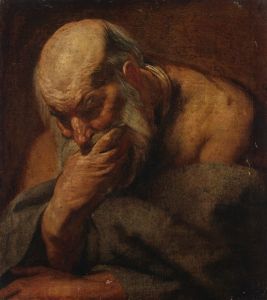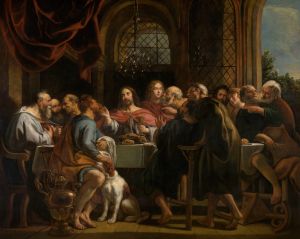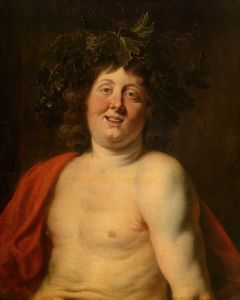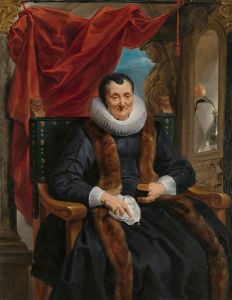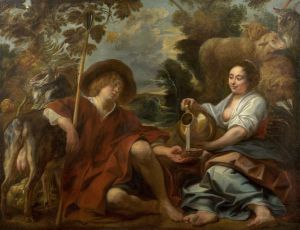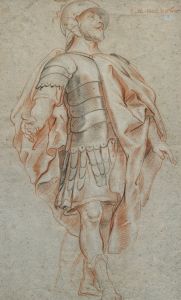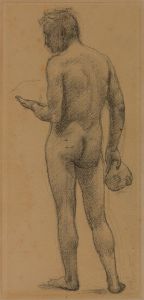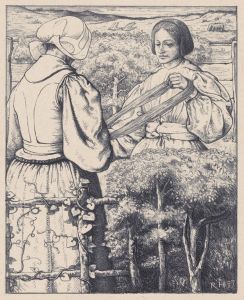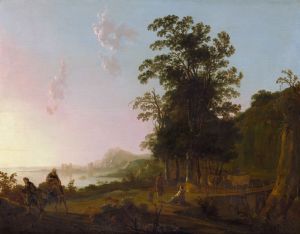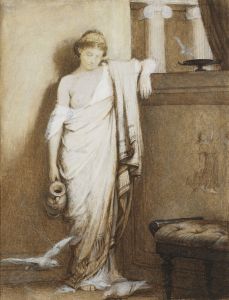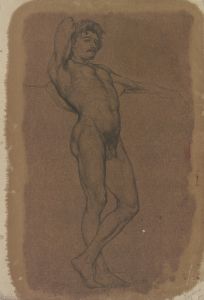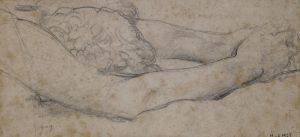
Study of an old man with clasped hands
A hand-painted replica of Jacob Jordaens’s masterpiece Study of an old man with clasped hands, meticulously crafted by professional artists to capture the true essence of the original. Each piece is created with museum-quality canvas and rare mineral pigments, carefully painted by experienced artists with delicate brushstrokes and rich, layered colors to perfectly recreate the texture of the original artwork. Unlike machine-printed reproductions, this hand-painted version brings the painting to life, infused with the artist’s emotions and skill in every stroke. Whether for personal collection or home decoration, it instantly elevates the artistic atmosphere of any space.
Jacob Jordaens was a prominent Flemish Baroque painter, known for his vibrant use of color and dynamic compositions. Among his notable works is "Study of an Old Man with Clasped Hands," a drawing that exemplifies his skill in capturing human emotion and character through portraiture. This artwork is a study, which means it was likely created as a preparatory work for a larger painting or as an exercise in capturing the human form and expression.
The drawing depicts an elderly man with his hands clasped, a pose that suggests contemplation or prayer. Jordaens was known for his ability to convey the inner life of his subjects, and this study is no exception. The man's face is rendered with careful attention to detail, highlighting the wrinkles and textures of aged skin, which adds a sense of realism and depth to the work. The expression on the man's face is one of introspection, and the clasped hands further emphasize a moment of personal reflection or devotion.
Jordaens was a contemporary of Peter Paul Rubens and Anthony van Dyck, and while he was influenced by these masters, he developed his own distinctive style. Unlike Rubens, who often depicted grand historical and mythological scenes, Jordaens frequently focused on more intimate and domestic subjects. His works often included scenes of everyday life, imbued with a sense of warmth and humor. This focus on the human condition is evident in "Study of an Old Man with Clasped Hands," where the simplicity of the composition allows the viewer to connect directly with the subject's humanity.
The technique used in this drawing is characteristic of Jordaens' approach to studies. He often employed chalk or ink to create detailed sketches that captured the essence of his subjects. These studies were crucial to his process, allowing him to experiment with form and expression before committing to a final composition. The use of light and shadow in the drawing adds a three-dimensional quality to the figure, showcasing Jordaens' mastery of chiaroscuro, a technique that plays with the contrast between light and dark to create a sense of volume and depth.
"Study of an Old Man with Clasped Hands" reflects the broader cultural and artistic trends of the Baroque period, which emphasized movement, emotion, and drama. This period was marked by a heightened interest in the human experience, and artists like Jordaens sought to explore this through their work. The drawing not only serves as a testament to Jordaens' skill as an artist but also provides insight into the values and interests of the time.
While the exact purpose of this study is not documented, it remains an important piece within Jordaens' oeuvre. It offers a glimpse into the artist's process and his ability to convey complex emotions through simple yet powerful imagery. Today, works like "Study of an Old Man with Clasped Hands" continue to be appreciated for their technical excellence and emotional resonance, contributing to Jacob Jordaens' enduring legacy in the history of art.





